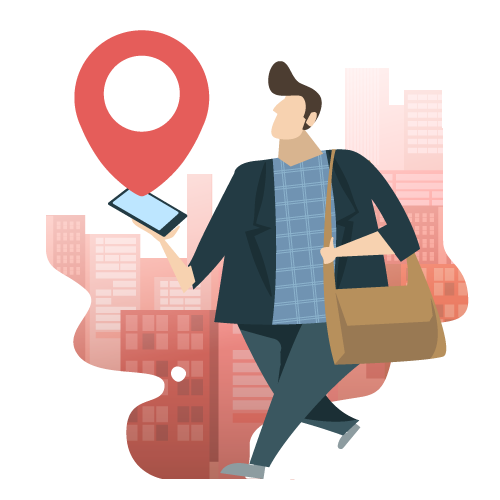Maps and Locations
 Mobile devices can detect their locations using a number of different mechanisms. To same extent, this depends on the hardware, and on the location of the resources such as cellphone masts that the phone uses for location detection.
Mobile devices can detect their locations using a number of different mechanisms. To same extent, this depends on the hardware, and on the location of the resources such as cellphone masts that the phone uses for location detection.
Global Positioning System (GPS).
GPS is the technology used by satellite navigation (SatNav) devices. It works by comparing signals received from satellites in space, and calculating the difference between them The phone does not need access to the internet, nor even the mobile phone network, but it does need to receive the satellite signal from four satellites, so it works best outdoors.
Cellular Network location
Mobile phones receive signals from the cellular network while they are switched on. The information from the network can be used to position the phone. Note that the cellular network operator often has a very good idea of where any phone is from this information, and cellular operators keep this data for some time. This has been used by the police to solve many crimes in recent years.
Wifi
As with cellular networks, phones can use wifi signals from wifi hubs to determine their location. This can be very accurate in areas where there are a lot of such devices, e.g. towns and cities.
Bluetooth
Bluetooth is designed as a very short range communication mechanism, generally it works only between a PC or phone and a peripheral device like speakers, headphones and keyboards. Nonetheless, bluetooth can be used to detect when a user with an app is very near (or has moved away from) a bluetooth location.
Using locations in an app
Maps can easily be added to an app. All the functions that are available in apps like ‘Google Maps’ can generally be implemented in an app.
You can therefore display a location, where the user is in relation to it, directions to get there and so on.
Maps can be displayed in the standard map format, or as a satellite image (where available.) You can also create overlays - for example a stylised map in your own format, but which still shows the users location and relation to other locations in the area.
Example scenarios:
City Guide: An app that shows points of interest in Barcelona, and guides a visitor to these locations.
Theme Park: As with city guide, but the stylised overlay with the theme parks branding would be a good idea. The map works just as well, but the ‘Pirate Ship’ is shown with a suitably “piratey” skull and crossbones picture.
Treasure hunt: Users are challenged to find certain locations following clues. When they find them they take a picture. Here the location is not guiding the user, but stamping the picture they took to prove they found the right place.
Maintenance Company: A company has a team of field engineers maintaining equipment. Each engineer has an app used to assign jobs to them. When a fault occurs, the company can find the nearest engineer to assign to the job.
One implementation of the maintenance company app has engineers arrive at a customer site. When they get there, if there is no answer they take a photo of the door which is timestamped, and thus they have evidence that they were at the location and when.
Cost and technical implications: Maps and location functions are standard in phone apps so many scenarios like the ones listed above are actually quite straightforward to develop.
Some of these would be standard product apps, and hence low cost to develop. More complicated apps (eg the theme park using a map overlay) would be medium cost.
The maintenance company app would be medium to high cost, not because of the app itself, but because it would need backend systems to manage the engineers. This would have to be developed (high cost) or the app would have to be integrated with an existing system (medium to high cost)
